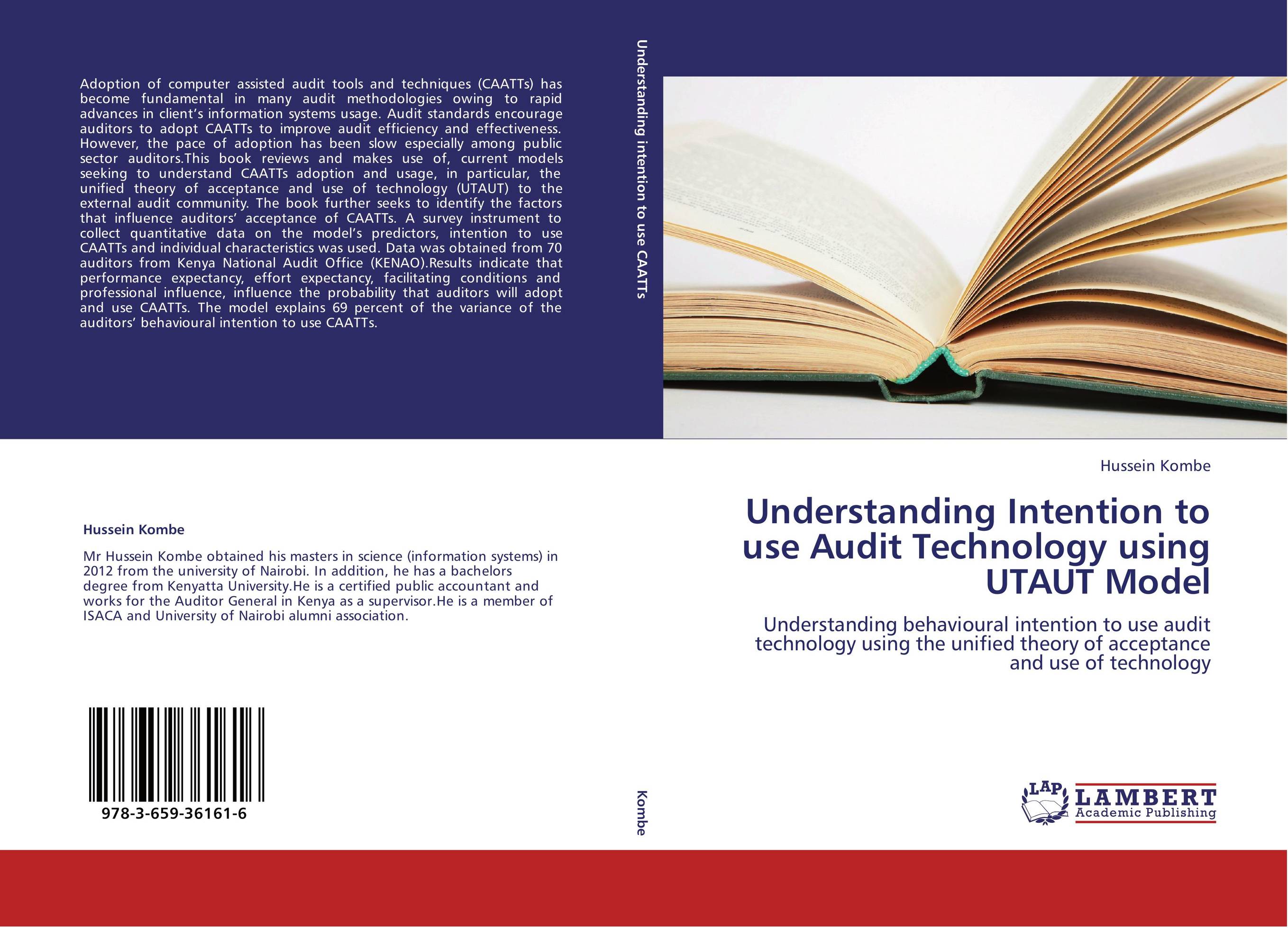| Поиск по каталогу |
|
(строгое соответствие)
|
- Профессиональная
- Научно-популярная
- Художественная
- Публицистика
- Детская
- Искусство
- Хобби, семья, дом
- Спорт
- Путеводители
- Блокноты, тетради, открытки
Understanding Intention to use Audit Technology using UTAUT Model. Understanding behavioural intention to use audit technology using the unified theory of acceptance and use of technology

В наличии
| Местонахождение: Алматы | Состояние экземпляра: новый |

Бумажная
версия
версия
Автор: Hussein Kombe
ISBN: 9783659361616
Год издания: 2013
Формат книги: 60×90/16 (145×215 мм)
Количество страниц: 156
Издательство: LAP LAMBERT Academic Publishing
Цена: 41601 тг
Положить в корзину
Позиции в рубрикаторе
Отрасли знаний:Код товара: 120972
| Способы доставки в город Алматы * комплектация (срок до отгрузки) не более 2 рабочих дней |
| Самовывоз из города Алматы (пункты самовывоза партнёра CDEK) |
| Курьерская доставка CDEK из города Москва |
| Доставка Почтой России из города Москва |
Аннотация: Adoption of computer assisted audit tools and techniques (CAATTs) has become fundamental in many audit methodologies owing to rapid advances in client’s information systems usage. Audit standards encourage auditors to adopt CAATTs to improve audit efficiency and effectiveness. However, the pace of adoption has been slow especially among public sector auditors.This book reviews and makes use of, current models seeking to understand CAATTs adoption and usage, in particular, the unified theory of acceptance and use of technology (UTAUT) to the external audit community. The book further seeks to identify the factors that influence auditors’ acceptance of CAATTs. A survey instrument to collect quantitative data on the model’s predictors, intention to use CAATTs and individual characteristics was used. Data was obtained from 70 auditors from Kenya National Audit Office (KENAO).Results indicate that performance expectancy, effort expectancy, facilitating conditions and professional influence, influence the probability that auditors will adopt and use CAATTs. The model explains 69 percent of the variance of the auditors’ behavioural intention to use CAATTs.
Ключевые слова: auditors, Technology Acceptance, behavioural intention, CAATTs, audit technology, Unified Theory of Acceptance and Use of Technology



